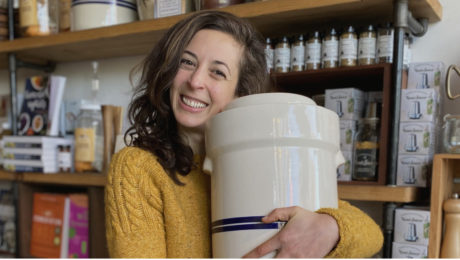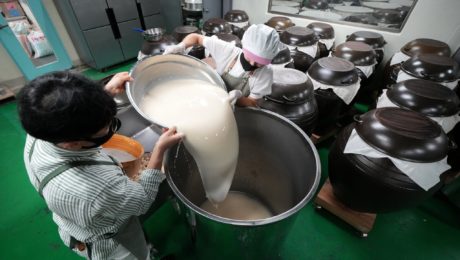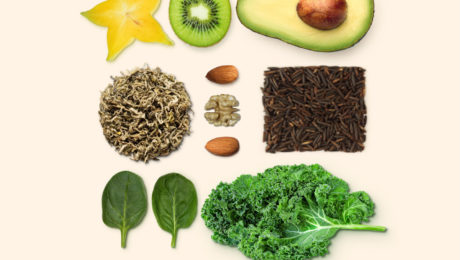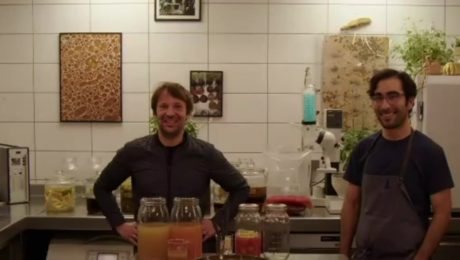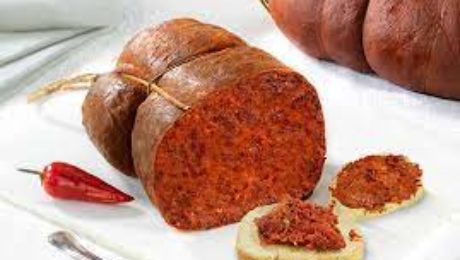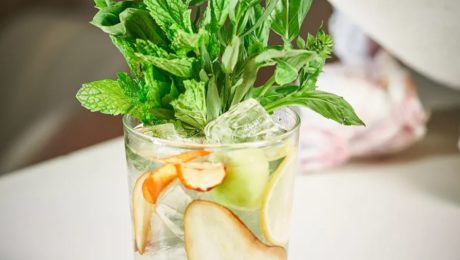San Francisco’s Growing Chocolate Scene
In San Francisco, a “booming Bay Area confection ring” is developing.. Julia Street, a former food tech industry exec, is the latest entrant. She is now a self-taught chocolatier running J Street Chocolate.
Street began pursuing chocolate “to follow her obsession with all things fermented.” The experimental chocolates “only a scientist could dream up” are made using upcycled ingredients from other fermenters in the city. For example, she uses spent grains from Laughing Monk Brewing in her Piv Snack Bars. She tells Eater that the ethics behind the chocolate are important to her, too. Her 68% cacao bar is sourced from the Dominican Republic, and sales support a Northern Dominican agroforestry project.
Other Bay Area chocolate shops that have cropped up in recent years include Dandelion Chocolate, Topogato and Kokak Chocolates.
Read more (Eater)
- Published in Business, Food & Flavor
Korean Rice Wine Gets a Makeover
Makgeolli made the pages of The New York Times, hailed as a “cosmopolitan sensation over the past decade…the buzz grew during Covid lockdowns.”
The Korean rice wine is a centuries-old tradition in Korea. Makgeolli (or makkolli) is made from fermented rice and nuruk (a dough-like starter). But the drink’s had a difficult history in the country. It was banned during Japan’s 35-year occupation of the Korean Peninsula, then suppressed again in the 50’s during a postwar grain shortage.
“For the people that grew up in postwar Korea, their understanding of makgeolli and soju is very different from what the general population of Koreans understood in prewar,” says Alice Jun, the New York-based makgeolli producer behind Hana Makgeolli. Jun studied the craft in Seoul before starting her artisanal brand in Brooklyn.
The makgeolli industry used to be run by larger companies until about 10 years ago. Now smaller start-ups are leading the industry, and young Korean professionals are driving demand for the drink.
“It’s not that we’re taking a new approach to things,” Jun said of her brand and the makgeolli start-ups that are proliferating in South Korea. “It’s that we’re appreciating the traditional things, and calling attention to them in the world of the internet and social media and brands.”
Read more (The New York Times)
- Published in Business, Food & Flavor
Fermented Foods Top 2022’s Superfood List
For the fifth year in a row, fermented foods again top the Today’s Dietitian annual list of superfoods.
The 10th annual What’s Trending in Nutrition survey “reveals a wave of change resulting from the pandemic.” Public relations firm Pollock Communications, who conducted the survey for the magazine, surveyed 1,173 Registered Dietitian Nutritionists (RDNs) about trends for 2022. The “most surprising change from the past decade,” RDNs agreed, was “the shift from low-carb to high-fat diets…followed by plant-based eating.”
Health- and immunity-boosting food “will be the biggest trend in the next decade that will shape changes in the food industry.” Immunity support, affordability and emotional well-being are consumers’ top purchase drivers; convenience, healthy, taste, low-cost and natural are the top label attributes.
The label attribute “healthy” first made the top three list in 2019 “as consumers began to better understand the connection between food and overall well-being.” RDNs say the Covid-19 pandemic accelerated the healthy food trend.
“With the focus on health and immunity in the next decade, and the increased popularity of plant-based eating, nutrient-dense options will be an important part of consumer diets, as [consumers]embrace food as medicine to help prevent disease,” says Louise Pollock, president of Pollock Communications. “In addition, there will likely be an increased interest in functional foods containing ingredients that provide health benefits beyond their nutrient profile.”
Consumer desire for gut-boosting benefits pushed fermented foods to #1 on the list. Changes to the top 10 show salmon is out and ancient giants are in.
“The predictions of RDNs, the frontline experts in food and nutrition, are always reliable to help food and beverage manufacturers and marketers meet the demands of consumers. Our survey has accurately tracked health and wellness trends for a decade,” says Mara Honicker, publisher of Today’s Dietitian. “We are pleased to have been able to share these insights for the past ten years and especially during this chaotic time in our lives, when food is playing such a major role in providing health, wellness and emotional support.”
The full superfoods list is:
- Fermented foods, like yogurt and kefir
- Blueberries
- Seeds, like chia and hemp
- Exotic fruit, like acai and golden berries
- Avocados
- Green tea
- Nuts
- Ancient grains
- Leafy greens, like spinach
- Kale
To read all the takeaways from the 2022 survey, check out the Pollock Communications press release.
- Published in Food & Flavor, Health
“Our Customers Do Not Even Know What is a Fermented Item”
Fermentation is cloaked in mystery for many — it’s bubbly, slimy, stinky and not always Instagram-ready. In The Fermentation Association’s recent member survey, this lack of
understanding of fermentation and its flavor and health attributes among consumers was cited by 70% of producers as a major obstacle to increased sales and acceptance of fermented products.
“We get so many questions from our readers about fermentation. People are very interested, but have very, very little knowledge about it,” says Anahad O’Connor, reporter for The New York Times. O’Connor has written about fermented foods multiple times in the last few months, and those articles were among The Times’ most emailed pieces of 2021. “I think there’s a huge opportunity to educate consumers about fermented foods, their impact on the gut and health in general.”
O’Connor spoke on consumer education as part of a panel of experts during TFA’s conference, FERMENTATION 2021. Panelists — who included a producer, retailer, scientist, educator and journalist — agreed consumer education is lacking. But the methods of how to fill that gap are contested.
How to Tell Consumers “What is a Fermented Food?”
There are differences between what is a fermented product and what is not — a salt brine vs. vinegar brine pickle, or a kombucha made with a SCOBY or one from a juice concentrate, for example.
“I can tell you that the majority of our customers do not even know [what is a] fermented item,” says Emilio Mignucci, vice president of Philadelphia gourmet store Di Bruno Bros., which specializes in cheese and charcuterie. When customers sample products at the store, they can easily taste the differences between a fermented and a non-fermented product, Mignucci says. But he feels the health benefits behind that fermented product are not the retailer’s responsibility to communicate. “I need you guys [producers] to help me deliver the message.”
“Retailers like myself, buyers, we want to learn more to be able to champion [fermented foods] because, let’s face it, fermented foods is a category that’s getting better and better for us as retailers and we want to speak like subject matter experts and help our guests understand.”
Now — when fermentation tops food lists and gut health is mainstream — is the time for education.
“This microbiome world that we’re in right now is sort of a really opportune moment to really help the public understand what fermented foods are beyond health,” says Maria Marco, PhD, professor of food science at the University of California, Davis (and a TFA Advisory Board Member).
Kombucha Brewers International (KBI) created a Code of Practice to address confusion over what is or is not a kombucha. KBI is taking the approach that all kombucha is good, pasteurized or not, because it’s moving consumers away from sugar- and additive-filled sodas and energy drinks.
“That said, consumers deserve the right to know why is this kombucha at room temperature and this kombucha is in the fridge and why does this kombucha have a weird, gooey SCOBY in it and this one is completely clear,” says Hannah Crum, president of KBI. “They start to get confused when everything just says the word ‘kombucha’ on it.”
KBI encourages brewers to be transparent with consumers. Put on the label how the kombucha is made, then let consumers decide what brand they want to buy.
Should Fermented Products Make Health Claims?
Drew Anderson, co-founder and CEO of producer Cleveland Kitchen (and also on TFA’s Advisory Board), says when they were first designing their packaging in 2013, they were advised against using the term “crafted fermentation” on their label because it would remind consumers of beer or wine. But nowadays, data shows 50% of consumers associate the term fermentation with health.
“In the last five to six years, it’s changed dramatically and people are associating fermentation as being good for them, which is good for my products,” he says.
Cleveland Kitchen, though, does not make health claims on their fermented sauerkraut, kimchi and dressings. Anderson says, as a small startup, they don’t have the resources to fund their own research. They instead attract customers with bold taste and striking packaging.
“We’re extremely cautious on what we say on the package because we don’t have an army of lawyers like Kevita (Pepsi’s Kombucha brand), we don’t have the Pepsi legal team backing us here,” Anderson says. Cleveland Kitchen submits new packaging designs in advance to regulators, to make sure they’re legally acceptable before rolling them out.
O’Connor says taste is the No. 1 driver for consumers. This is why healthful but sticky and stinky natto (fermented soybeans) is not a popular dish in America, but widely consumed in Japan.
“Many American consumers, unfortunately, aren’t going to gravitate toward that, despite the health benefits,” he says.
Crum disagrees. “Health comes first,” she says. As more and more kombucha brands emphasize lifestyle, and don’t even advertise their health benefits, she feels they are doing a disservice to the consumer. “Why pay that much money for kombucha if you don’t know it’s good for you too?”
- Published in Business, Food & Flavor, Health, Science
Fermented Sushi
In Japan, one family has been making funazushi — the ancient, fermented predecessor to modern sushi — for 18 generations. Instead of using raw fish, funazushi uses fish aged for three years.
The funazushi-making process at Kitashina — which opened in 1619 in the small Japanese town Takashima — is labor intensive. A chef removes the fish’s scales and, without cutting into its flesh, removes the gills and innards through its throat. The fish is then packed with salt, layered in a wooden tub, weighted with over 65 pounds of stones and left to cure for two years. Then the fish is rinsed, dried in the sun for a day and fermented for another year before being ready to eat.
The microorganisms in the wooden tubs (called kioke) “naturally produce the fermentation that gives Kitashina’s funazushi its authentic flavour.” Mariko Kitamura (pictured), family owner of Kitashina , says those beneficial microorganisms would die if the tubs were ever emptied.
Though modern sushi includes ocean seafood, funazushi uses fresh water fish, particularly funa (carp). The fermented sushi technique is an adaptation of what has been used in China for thousands of years. The Chinese make narezushi using the freshwater fish that live in rice paddies.
Read more (BBC)
- Published in Food & Flavor
Redzepi: “Fermenting is our future”
An interesting indication of how quickly and decisively fermentation is moving into the U.S. food mainstream is a recent online event organized and offered by American Express and restaurant booking service Resy, “A Fermentation Workshop with Noma.” For $50, one could sign up for an hour-long Zoom — introductions from Noma’s René Redzepi and Jason White, and demonstrations of making lacto-fermented tomatoes and a juice-based kombucha, all moderated by renowned food writer Ruth Reichl — and a copy of 2018’s “The Noma Guide to Fermentation.” The event sold out in minutes.
Redzepi (Noma chef and co-owner) and White (Noma’s head of fermentation) were in their fermentation lab at the restaurant, and gave concise, compelling comments on the long history of fermentation and its importance. They noted the healthful aspects of the process but emphasized its ability to produce delicious flavors.
“One of the most important things for me as a fermenter is definitely having a closer look at nature, and also being able to create new and interesting flavors that can have beneficial effects on humans, meaning it can make us healthier, it can make our dinners more exciting and also we can teach future generations how they can interact with nature as well,” White says. “The power of fermentation is a really good bridge to that because, in one way or another, in every culture, in every place on earth, there are people who have been doing it for thousands of years. I think it’s important for us to carry the torch. And I think carrying the torch of fermentation is definitely my biggest dream, to carry it for another thousand years.”
When Noma opened over 18 years ago, it was in the dead of winter and they struggled to deliver meals made from Nordic ingredients. “We were really desperate to find food,” Redzepi continues. By spring, they began foraging, “it grounded us and gave us direction.” A few years into foraging, they wondered how they could take the abundance of spring and summer ingredients and use it in the long winter season.
“That’s when we started dabbling into fermentation,” he says. “And from that moment on, a whole new world opened up for restaurant Noma. You could even say fermentation eclipsed foraging because we found out, through the yeast and the mold and the bacterias, we could simply create such new flavors that would transform our kitchens forever. We started tapping into the community worldwide of fermenters and traditional fermentations, adapting them to our ingredients and our region and thus creating a new set of tools that has really engrained itself into every single Noma dish. You don’t eat anything at Noma that doesn’t have ferments in them.”
“Instead of food waste, you can ferment it into something delicious,” he adds.
They made the recipes seem easy to execute (though I suspect the presentation of SCOBY might have put off some participants). And, to ensure at least a small dose of titillation, they proffered a container of one current project in the lab, “Reindeer Penis Garum.” They used this as an example of how fermentation can minimize waste by finding applications for what would otherwise be scrap or trash.
The detailed discussion of kombucha was illuminating, including an interesting contrast with vinegars. Noma makes numerous kombuchas, both for direct consumption and for use as an ingredient. Redzepi expressed his personal perspective, which helps explain why. He says he has yet to find a commercial product “that’s worth buying” — and it’s easy to make yourself.
It was great to see fermentation as a front-and-center topic, but there is still work to be done. The literature that was sent to all participants to accompany the presentation included references in the kombucha recipe to “backstop” and “backdrop” liquid — though they meant “backslop.”
- Published in Business, Food & Flavor
“Poor Man’s Viagra”
More chefs are experimenting with ‘nduja, a spreadable, fermented pork salami. ‘Nduja is packed with Calabrian chiles, giving it a kick with an underlying sweetness.
‘Nduja hails from northern Italy, dating back to either the 13th Century or early 1800s (historians dispute the date). Food experts agree ‘nduja was inspired by the French sausage andouille, typically made from pork and pig innards. Like many other fermented dishes, it’s believed to have been “born out of necessity…the cured pork product that’s resistant to spoilage was originally made using excess fat and meat trimmings left over from the butchering process.” Once all ‘nduja’s ingredients are minced together, the meat is stuffed into sausage casings, fermented for 2-5 days and then aged.
‘Nduja (pronounced en-doo-ya) is referred to as “red Nutella” and the “poor man’s Viagra” (the latter because of the belief that chilli peppers are a natural stimulant).
Read more (SBS Australia)
- Published in Food & Flavor
Reviving a Fermented Soda
Is gazoz — a Mediterranean-born mocktail made with fermented fruit and herbs — the next trending drink? It“fell out of favor for a few decades,” according to an Eater article, but chefs and bartenders in Turkey and Israel are bringing it back.
Gazoz is a flavor-packed drink that is also visually striking. It’s served packed with herbs and chunks of fruit. Chef Benny Briga (Cafe Levinsky 41 in Tel Aviv) and author Adeena Sussman have written a new book on the drink.They include numerous variations on the drink, including ones that highlights Briga’s signature seasonal fruit syrup that he says is made by “sweet fermentation.” Many of the drink recipes in “Gazoz” also include sweet-fermented spices, nut syrups and aerobic fermentations such as kefir and kombucha.
Read more (Eater)
- Published in Food & Flavor
How Do Alternative Proteins Overcome Their Challenges?
Is carbon the real villain in modern diets? One-third of greenhouse gas emissions come from food production, so companies are turning to technologies like precision fermentation and cell-cultured meat to help create a more sustainable industry. But a transition to alternative proteins won’t be easy.
“The food tech industry has a blind spot,” says John Fasman, U.S. digital editor with The Economist, “they haven’t fully grappled with the fact that food isn’t just fuel, it’s an emotional connection to a lot of people.”
The Economist’s latest cover piece — “Future Food” — explores if and how first-world food systems may adapt. Fasman (who wrote the piece) and Josie Delap (The Economist’s international editor) discussed the business and ethics of alternative proteins in a webinar.
The Conceptual Hurdle of Alt Meat
Though many consumers are adopting flexitarian diets, widespread change isn’t realistic. “Getting people to adjust to their culture expectations of food is a very long task,” Delap adds.
For example, the Thanksgiving turkey or Christmas ham is a holiday tradition consumers aren’t eager to change — and meat substitutes cannot yet deliver. Alternative proteins have come light years from early days of vegetarian “meat” — which was often a flavorless mash of beans and lentils — and now include flavorful and appealing ground meat products. But no one is producing an entire alternative turkey or steak, in which fat, muscle and sinew are layered together.
According to the Good Food Institute, alternative proteins are made by one of three food technologies:
- Plant-based is the oldest form of meat alternatives, using plants to recreate meat flavors.
- Cultivated meat is produced directly from the cells of animals. Muscle cells are taken from a living animal, then multiplied in a lab to create a meat product biologically identical to meat tissue.
- Fermented alternative proteins are made using one of three processes: traditional fermentation (the ancient practice of using microbes in food), biomass fermentation (growing naturally occurring, protein-dense, fast-growing organisms, like fungi or algae) or precision fermentation (uses microbial hosts as “cell factories” to produce specific ingredients.)
“The most striking thing for me as a non-scientist is the extent to which what we eat can be broken into chemical elements and then replicated,” Fasman says. “Replicas of meat look and cook and smell strikingly like meat. You can enhance the flavor through fermentation.”
Consumers have been conditioned to believe foods with too many ingredients are worse for you. Alternative foods create new possibilities — they are built from the ground up, tweaked for nutritional content and made better with supplements. But consumers will have to accept engineered food in order to make a positive environmental impact.
“If you’re going to change the system you’re going to have to reckon with processing at some point and the question is how do you make processing as healthy as possible,” Fasman adds.
Competing on Price
Price is another challenge for alternative proteins. Today, they are often more expensive than meat.
“The risk is that they become a way for middle class and wealthy diners in rich countries to make choices that let them feel good about themselves as opposed to something that really transforms the world’s food system,” Fasman says. “It’s going to be hard for them to compete on price. I don’t think there’s any way around this problem.”
Fasman says the alternative protein industry is at the first stage of a very long process that is made longer by scaling, supply chain, acceptance and regulatory challenges. He estimates it will take at least a decade for alt proteins to compete with meat.
“[Alt-meats] will only be affordable at scale. And that’s why this period right now is the linchpin and it’s so tricky,” Fasman says. Startup companies are operating out of small labs. None of them — outside of Beyond Meat, creator of the Impossible Burger) — is big enough to satisfy a national, or even regional, market. But larger meat companies, like Tyson, Cargill or JBS, have also created meatless products.
Worldwide Adoption
Alternative meat’s acceptance on a global stage is even farther away, agreed Fasman and Delap. Animal-based meat is cheaper in richer countries, and often considered a status symbol or a special occasion dish.
“Burgers are a choice people in middle class cities can make,” Delap says.
Fasman adds that, while it’s unrealistic to think of alt meat being adopted broadly in the short term, it’s a start to offsetting the dangerous greenhouse gas emissions associated with the production of meat.
“Cultured meat, plant-based meat and milk substitutes are in their infancy. You want to scale up where the money and market is,” he says. “There’s a reason to start this process in wealthy countries and then have it flow to the rest of the world from there.”
- Published in Business, Food & Flavor
Definition & History of Fermentation
“Human civilization simply would not have been possible without fermented foods and beverages…we’re here today because fermented foods have been popular for humans for at least 10,000 years,” says Bob Hutkins, professor of food science at the University of Nebraska (and a recent addition to TFA’s Advisory Board).
Hutkins was the opening keynote speaker at FERMENTATION 2021, The Fermentation Association’s first international conference. His presentation explored the history, definition and health benefits of fermented foods.
Cultured History
The topic of fermentation extends to evolution, archaeology, science and even the larger food industry.
“The discipline of microbiology began with fermentation, all the early microbiologists studied fermentation,” Hutkins says.
Louis Pasteur patented his eponymous process, developed to improve the quality of wine at Napoleon III’s request. The microbes studied back then — lactococcus, lactobacillus and saccharomyces — remain the most studied strains.
“What interested those early microbiologists — namely how to improve food and beverage fermentation, how to improve their productivity, their nutrition — are the very same things that interest 21st century fermentation scientists,” Hutkins says.
Hutkins is the author of one of the books considered gospel in the industry, “Microbiology and Technology of Fermented Foods.” He says that fermented foods defined the food industry. In its early days, it was small-scale, traditional food production that “we call a craft industry now.” At the time, food safety wasn’t recognized as a microbiological problem.
Today’s modern food industry manufactures on a large-scale in high throughput factories withmany automated processes. Food safety is a priority and highly regulated. And, thanks to developments in gene sequencing, many fermented products are made with starter cultures selected for their individual traits.
“But I would say that there’s been kind of a merging between these traditional and modern approaches to manufacturing fermented foods, where we’re all concerned about time sensitivity, excluding contaminants, making sure that we have consistent quality, safety is a vital concern and extensive culture knowledge,” Hutkins says.
Defining & Demystifying
Fermentation — “the original shelf-life foods” — is experiencing a major moment. “Fermented foods in 2021 check all the topics” of popular food genres: artisanal, local, organic, natural, healthy, flavorful, sustainable, entrepreneurial, innovative, hip and holistic. “They continue to be one of the most popular food categories,” Hutkins continues.
Interest in fermentation is reaching beyond scientists, to nutritionists and clinicians. But Hutkins says he’s still surprised to learn how many professionals don’t understand fermentation. To address the confusion, a panel of interdisciplinary scientists created a global definition of fermented foods in March 2021.
“Fermentation was defined with these kind of geeky terms that I don’t know that they mean very much to anybody,” he says.
The textbook biochemical definition of fermentation that a microbiologist learns in Biochemistry 101 doesn’t work for a nutritionist or clinician focusing on fermentation’s health benefits. The panel, which spent a year coming to a consensus, wanted a definition that would simply illustrate “raw food being converted by microbes into a fermented food.” The new definition, published in the the journal Nature and released in conjunction with the International Scientific Association for Probiotics and Prebiotics (ISAPP), reads: “Foods made through desired microbial growth and enzymatic conversions of food components.”
Fermentation in 2022
Hutkins predicts 2022 will see more studies addressing whether there are clinical health benefits from eating fermented foods. The groundbreaking study on fermented foods at Stanford was important. It found that a diet high in fermented foods increases microbiome diversity, lowers inflammation, and improves immune response. But research like this is expensive, so randomized control trials are few.
Fermented foods could also make their way into dietary guidelines.
“Fermented foods, including those that contain live microbes, should be included as part of a healthy diet,” Hutkins says.
- Published in Food & Flavor, Science

